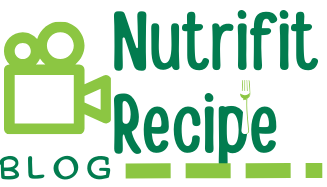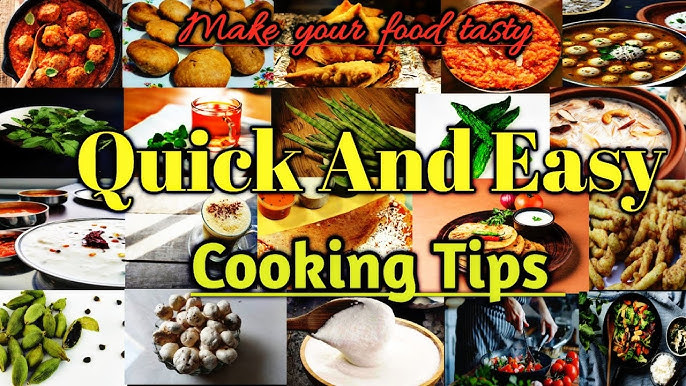The process of learning to cook can be a an enjoyable experience starting with basic recipes, before moving on to more complicated recipes.
Before cooking, you must read and collect all the ingredients you need. This will eliminate any confusion or mistakes that occur in the process.
1. Read the Recipe
From an older family recipe a food blog posts or one of the many websites that are available, make sure to go through and comprehend the recipe before you begin cooking. This will help you save time and avoid many errors in the kitchen that could be made without it.
Be attentive when you read recipes. Be aware of all the ingredients that are listed, and any specific equipment or tools needed for the successful execution. Make sure you have these ingredients, or know the exact items you need to purchase prior to cooking your food in the oven.
Pay particular attention to the step-bystep directions and check out the notes of the chef at the bottom of each recipe for suggestions, changes or suggestions from experienced chefs that can improve your experience and create delicious and flavorful items. Knowing how food will cook allows you to anticipate the time it will take to cook making sure that you don’t over or under cook the recipe.
2. Gather Your Ingredients
Although it might be pleasant, discovering that you don’t have the necessary ingredients or equipment midway through the process can be very difficult. So, it’s essential to read and research the recipe thoroughly before beginning; make sure you take note of any ingredients mentioned, as they might become necessary later on. Mise en Place is the French expression for putting everything in order which is also referred to as “setting in place”. It involves putting together the essential cookbooks, tools and other ingredients, and placing them in reach. Preparing ingredients in advance to use in the recipe includes measuring out spices or cutting vegetables in advance – something that can save time and energy, getting rid of unnecessary movement. This also helps avoid mistakes such as omitting an ingredient or putting the same ingredient twice; which means more time and energy to actually cooking!
3. Prep the Vegetables
Recipes for meal prep typically call for cooking vegetables which is why it’s important to master speedy and efficient methods for making this happen. One efficient method for doing this is by blanching. It involves submerging vegetables in boiling water, removing the tougher parts and make them more tender.
After being prepared vegetables are easily added to any meal for a snack or as a component of stews and soups. Another method of adding flavor and the nutritional value is to roast the vegetables, which gives them a distinct taste, while also preserving their the benefits of healthy eating.
When roasting vegetables It is crucial that they’re washed thoroughly and dry prior to cutting into uniform pieces to ensure even cooking. This will prevent soggy fridge broccoli, while ensuring healthy and delicious meals!
Other tips for making your vegetable preparation easier include steaming and the process of juicing. Steaming can be accomplished in a pot or by using the steamer basket placed on the top of your stove while juicing involves simply the passage of the vegetables by a juicer to extract the juice.
4. Prep the Meat
Preparing ingredients ahead of time for meat dishes is a great method of reducing time and ease stress, especially if your recipe requires you to season your meat prior to cooking. This will ensure clean hands and making sure that you get the same amount of seasoning in the meat dish.
Another way to cook meat is to marinate it making rub (spice mixture that is put into meat). This is particularly useful when making chicken, steak and pork dishes, as well as sausages that have raw fillings.
Explore different recipes to improve your knowledge of all the methods in which meats can be prepared. There are numerous recipes available found online from cookbooks and blogs Cookbooks can offer more detailed instructions and also background on the various techniques used. The Auguste Escoffier School of Culinary Arts could be particularly useful for those who are new to cooking and want to learn more about different techniques and techniques that are available to them.
5. Cook the Dish
Making dinner can be a challenge However, with these simple recipes for novice cooks,, you can streamline and improve the cooking process and your meals. The expert techniques employed by professional chefs can help save time, enhance flavors and prevent frequent mistakes made by rookies that frequently make cooking difficult for new cooks.
Before you begin cooking make sure you read through your recipe to be able to recognize every component and then choose any appliances or utensils that are required. This method, also known as mise-en-place helps you improve the organization of your kitchen and help you cook faster, and decrease the chances of leaving your stove on or making errors that can cause damage to your food.
Don’t be afraid to try new things when you cook your dishes. For example, if the recipe calls for nuts, but you are allergic you can substitute sunflower seeds or chopped almonds in place. Make sure to note your changes to make sure they come to you when making the dish again. Also, keep the notebook or mobile handy so that you can take notes whenever you need to.




